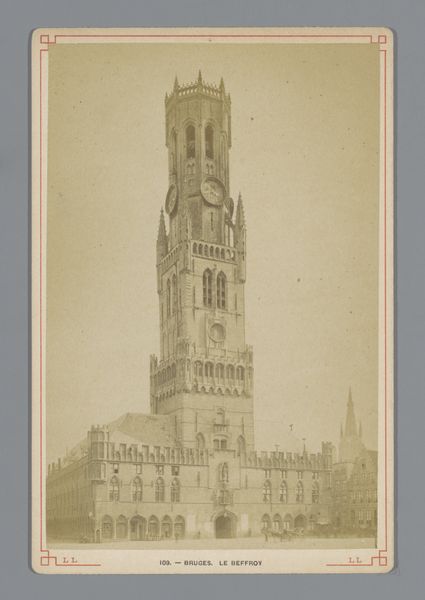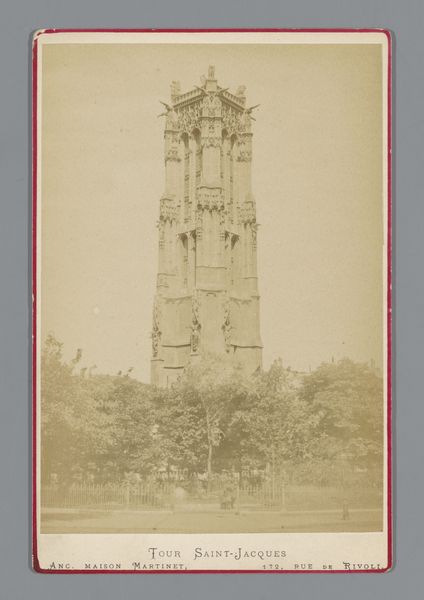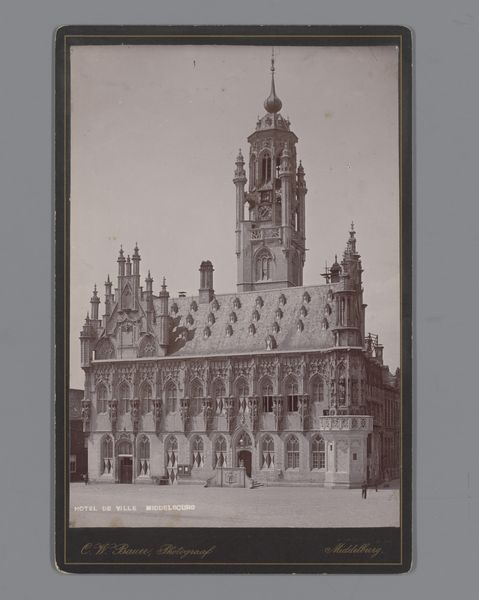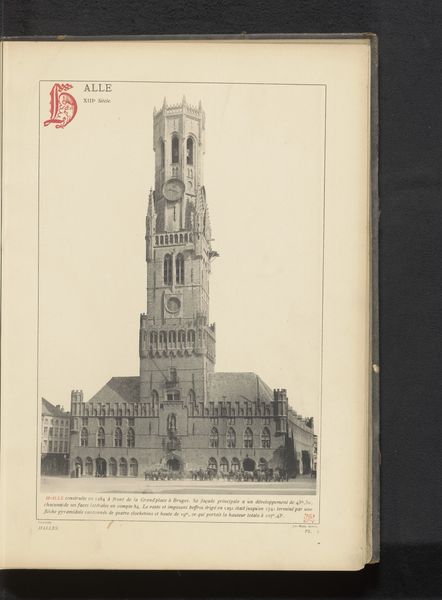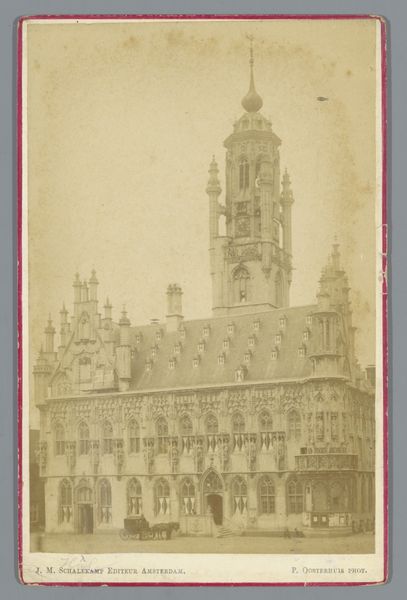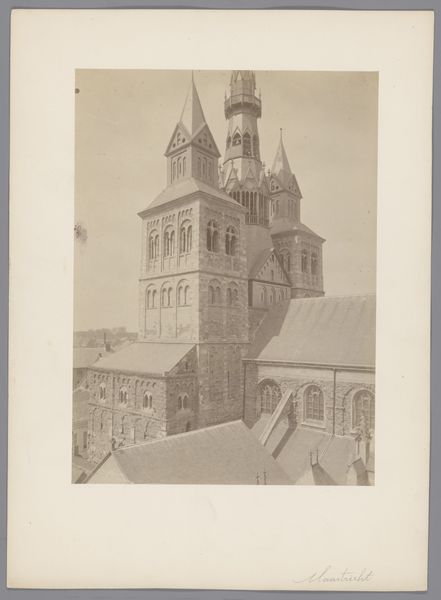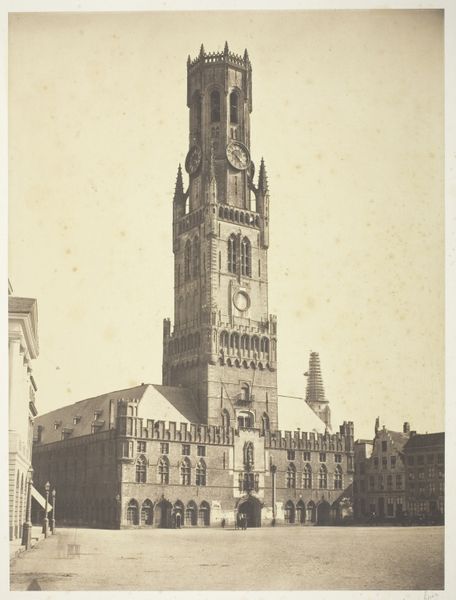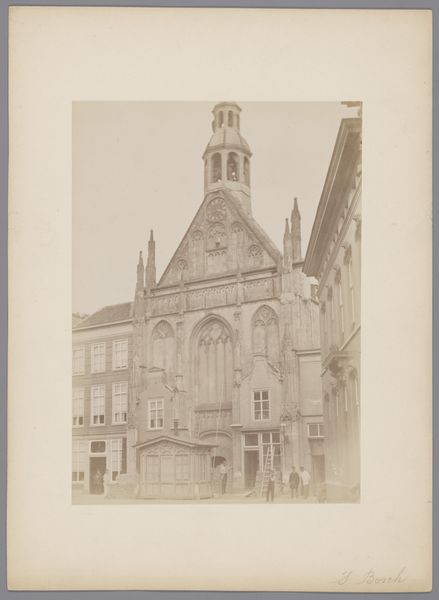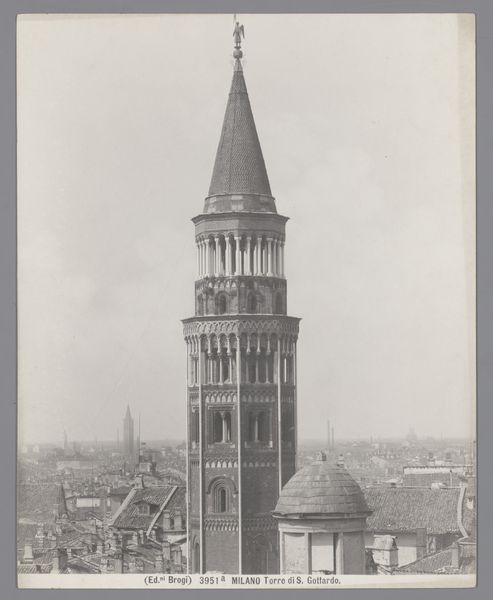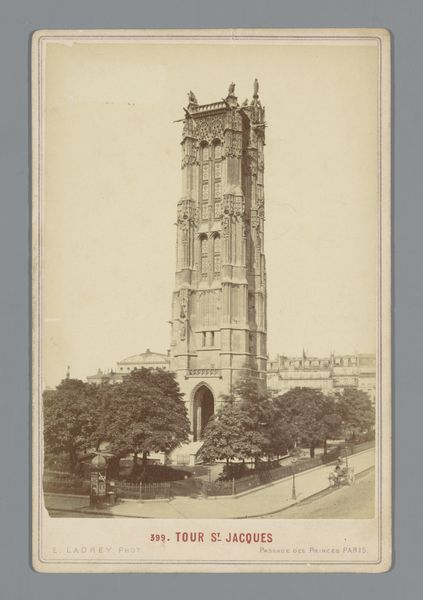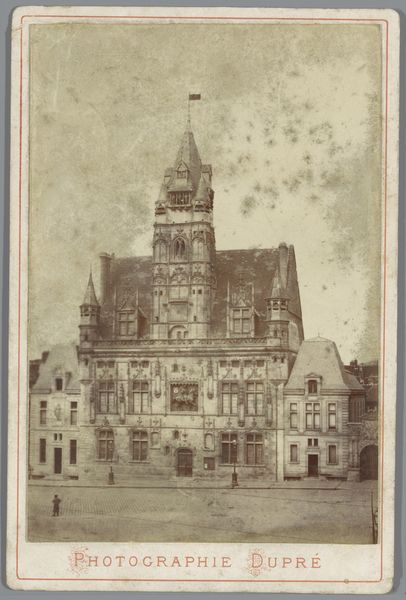
print, photography, albumen-print
# print
#
photography
#
cityscape
#
albumen-print
#
realism
Dimensions: height 165 mm, width 108 mm
Copyright: Rijks Museum: Open Domain
Curator: Today, we’re looking at a photograph titled "Gezicht op de Belfort in Brugge," or "View of the Belfry of Bruges," likely produced between 1864 and 1900 by the studio of L\u00e9on & L\u00e9vy. Editor: It's immediately striking. The verticality of the belfry utterly dominates the composition, this weighty stone structure looming against a soft sky. It almost feels imposing, even a little intimidating. Curator: The belfry has always been a potent symbol of Bruges' civic power, particularly during the medieval period. Images like this circulated widely, bolstering narratives of national identity and celebrating urban achievements during a period of rapid social transformation. Who benefited from the continued prominence of these spaces? Editor: I appreciate that perspective. The photographic clarity, though, is undeniably compelling. Notice how the details of the stonework, the precise arrangement of windows and arches, draw the eye upwards. There's an almost obsessive focus on texture and form. Curator: Yes, but consider who might have been excluded or marginalized in these displays of power and permanence. The composition itself centers the belfry and seemingly neutral public space as the foundation for trade and exchange while minimizing the significance of lived, communal experiences. It risks presenting a very one-sided vision of the city. How might ordinary workers have perceived that image? Editor: Still, even allowing for that critique, the control of light is remarkable. The tonality, achieved through the albumen print process, creates this incredible depth. And the lines—the way they converge and define the structure—speak volumes about design and planning. Curator: What stories are omitted? What are we missing about this location’s complex history of resistance, labor, and social interactions because we are drawn to such grand spectacles? How can we reinterpret these monuments and reimagine urban planning to truly foster shared identity and ensure greater justice and equal access to spaces of gathering? Editor: I think it invites us to appreciate how architecture can be both monumental and delicate, how photography can freeze a moment and preserve historical design. Even these old photographic techniques, so fragile now, offer a strong connection to history. Curator: Absolutely. Considering both the medium and the place itself allows us to remember to approach seemingly uncomplicated spaces as potential sites of negotiation, with past inequities and the continued pursuit of accessibility for all individuals in society still unfolding.
Comments
No comments
Be the first to comment and join the conversation on the ultimate creative platform.
